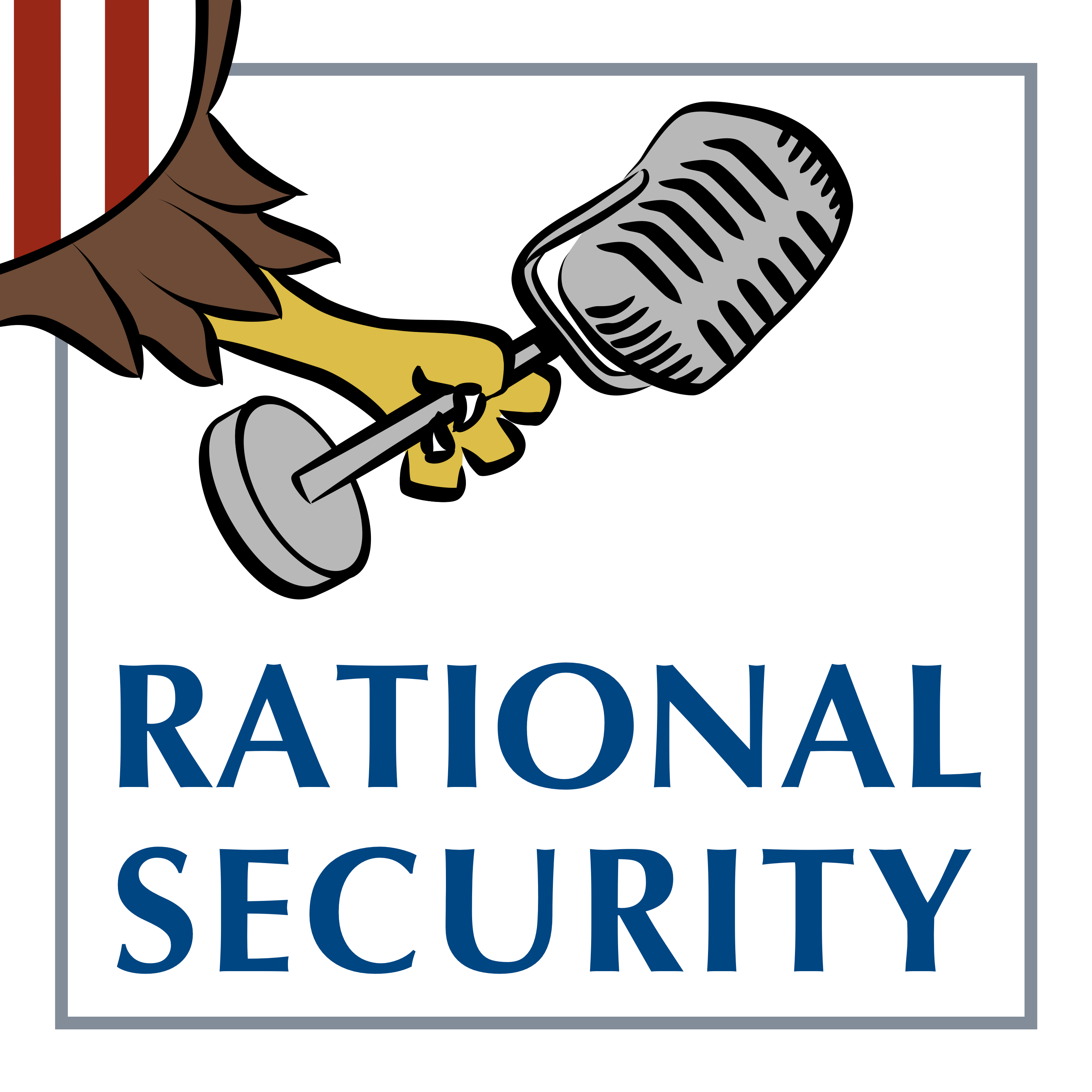The Shutdown Is Over, but Federal Workers Aren’t Out of the Woods

Published by The Lawfare Institute
in Cooperation With

The longest government shutdown in U.S. history has just come to an end. For more than 40 days, federal agencies furloughed many employees, and other employees performing essential functions, such as air traffic controllers and Transportation Security Administration agents, worked without pay. The shutdown has placed extraordinary strain on the federal workforce, forcing many employees to take on odd jobs to make ends meet. All of this has unfolded against the backdrop of an administration that has sought to weaken the civil service by reducing its size and by demanding greater loyalty from its workers.
On Nov. 9, eight Democrats in the Senate defected from the party to end the filibuster on a proposed continuing resolution. The resolution funds the government through Jan. 30, 2026. Two provisions alleviate some of the harm suffered by federal employees during the shutdown. The first provision awards back pay to all federal employees for the shutdown period. The second provision invalidates all actions related to reductions in force (RIFs) during the shutdown and imposes a moratorium on additional RIFs until at least Jan. 30, 2026.
While these provisions are important for protecting the federal workforce, they are temporary and do not halt the Trump administration’s assault on the federal workforce. If Congress truly wants to protect federal workers (at least in agencies that enjoy bipartisan support), it should leverage the power of the purse to secure greater concessions from the Trump administration and impose stronger guardrails.
The Impact of Shutdowns on the Federal Workforce
The Antideficiency Act prohibits federal agencies from expending funds during a lapse in appropriations. Employees may not provide “voluntary services” to the government during a shutdown except to perform “emergencies involving the safety of human life or the protection of property.” Employees who perform these essential functions continue to work without pay during the shutdown. While presidents have expansively and strategically decided which functions are “essential,” federal agencies furlough many of their employees for the duration of the shutdown. Since 1980, 11 government shutdowns have resulted in agencies furloughing federal employees. During the 2025 shutdown, agencies furloughed more than 620,000 employees.
Shutdowns inflict deep and lasting harm on both the federal workforce and the public. Most federal employees cannot afford to skip a paycheck, and the requirement that many continue to perform essential functions prevents them from finding other sources of full-time income. Many employees resort to odd jobs to provide for their families, such as delivering DoorDash or stocking grocery shelves. One air traffic controller told the New York Times, “There’s some times where I felt like just going into the corner and crying because it’s been pretty tough to push through the physical pain, the tiredness and waking up the next day having to do it all over again.” Given the drain on morale, shutdowns lead to a long-term loss of federal employees. Ultimately, pain for federal workers becomes pain for the public as critical government functions erode in their absence.
Congress has sought to provide reassurances to federal employees in light of the increasing frequency of government shutdowns. In 2019, Congress amended the Antideficiency Act by passing the Government Employee Fair Treatment Act (GEFTA). GEFTA clearly provides back pay to all federal employees affected by a lapse in appropriations:
Each employee … furloughed as a result of a covered lapse in appropriations shall be paid for the period of the lapse in appropriations, and each excepted employee who is required to perform work during a covered lapse in appropriations shall be paid for such work, at the employee’s standard rate of pay, at the earliest date possible after the lapse in appropriations ends, regardless of scheduled pay dates, and subject to the enactment of appropriations Acts ending the lapse.
Members of Congress sought to provide “a permanent solution to the problem” by guaranteeing “back pay to Federal employees furloughed during this shutdown and potential future shutdowns.”
The Trump administration’s approach to the federal workforce during the shutdown has undermined these guarantees and diminished confidence in the stability of federal employment. While the continuing resolution provides temporary relief to affected federal employees, it contains few guardrails to prevent the continued assault on the civil service.
The Guarantee of Back Pay
Congress passed GEFTA to permanently guarantee back pay for federal employees affected by a lapse in appropriations. The guarantee sought to better insulate federal workers from the political tumult of budget politics and discourage employees from permanently leaving federal employment during a temporary lapse of appropriations. Such guarantees are necessary to promote stability within the federal workforce and limit the long-term impacts of shutdowns on administrative capacity.
At the start of the 2025 shutdown, federal agencies reaffirmed the guarantee of back pay. The Office of Personnel Management’s FAQ page stated that “both furloughed and excepted employees will be paid retroactively as soon as possible after the lapse ends, regardless of scheduled pay dates.” Agencies sent emails to employees reminding them of this guarantee.
Several days into the shutdown, however, the Trump administration advanced a novel (and strained) interpretation of the GEFTA. The Office of Management and Budget (OMB) issued a memo explaining that GEFTA did not create “an obligation on the part of the government to pay furloughed employees” and, therefore, did not require federal agencies to award back pay. It argued that the act was not “self-executing,” meaning that federal agencies could only provide back pay if Congress “specifically provide[d] an appropriation for such purpose.” To support its conclusion, it fixated on the statutory phrase “subject to the enactment of appropriations Acts ending the lapse,” which was added to GEFTA several days after its passage.
The Trump administration’s interpretation would render GEFTA a nullity. OMB argues that GEFTA provides “a permanent authorization for furloughed workers to receive back-pay in the appropriations Act that ends the lapse,” but “does not create a requirement to do so.” But Congress does not need authorization to exercise its spending power. Indeed, Congress has always provided back pay to furloughed employees even before the passage of GEFTA. GEFTA loses all meaning if Congress must still pass separate appropriations for back pay after each funding lapse.
The Trump administration’s interpretation comports with neither the text nor the purpose of GEFTA. Its text mandates that furloughed employees “shall be paid for the period of the lapse in appropriations” (emphasis added). Nothing in the text suggests that such payment is discretionary. Moreover, the legislative history demonstrates that Congress understood GEFTA as requiring back pay for all future shutdowns—not just the 2019 shutdown. Some members of Congress even objected to the fact that GEFTA would create a new, mandatory entitlement program.
The legislative history offers no clear explanation for why Congress amended GEFTA to include “subject to the enactment of appropriations Acts ending the lapse.” No member of Congress discussed this amendment. If Congress intended the amendment to limit the application of GEFTA to the 2019 shutdown alone, the complete absence of any debate is striking—especially given the broad, bipartisan desire to establish a permanent solution to the back pay problem. The absence of any debate suggests that Congress viewed the phrase as a standard, procedural acknowledgment of the appropriations process rather than as a meaningful limitation on GEFTA’s scope. This additional phrase might matter if Congress refused to provide any funding for personnel within a particular agency. Absent such an extreme scenario, however, this phrase should not be interpreted in a way that renders GEFTA wholly meaningless.
As a matter of law, GEFTA prevented the need for Congress to explicitly authorize back pay to federal employees. Nevertheless, President Trump has made such a guarantee politically necessary. Section 116 of the continuing resolution provides that funds “shall be available for” back pay and “such payments shall be made.” Accordingly, the bill’s text clearly prohibits the Trump administration from denying back pay to federal employees.
The Trump administration’s interpretation of GEFTA sets a troubling precedent. It effectively denies Congress the power to guarantee payments to employees and others affected by funding lapses, undermining Congress’s ability to provide reassurances of stable governance. Although GEFTA sought a permanent solution to these problems, the administration’s position means that Congress must now explicitly direct the president to award back pay in every future appropriations law.
Of course, the Trump administration’s refusal to provide back pay is not the only way in which it violated the Antideficiency Act during this shutdown. The Trump administration also violated the act by obtaining private funding to pay the troops. Private funding of government functions would effectively allow the president to decide which functions the government should perform. President Trump’s actions reveal a fundamental disregard for Congress’s power of the purse and contempt for the laws it has enacted to preserve its own power and promote government stability.
A Moratorium on Reductions in Force
In the past, federal agencies have complied with the Antideficiency Act by furloughing federal employees during a lapse in appropriations. Once Congress enacts appropriations, furloughed employees return to work. The Trump administration, however, sought to use RIFs instead of furloughs, leading to a more permanent change in the federal workforce. By Oct. 10, federal agencies had issued RIF notices to over 4,000 employees.
The American Federation of Government Employments filed a lawsuit seeking to enjoin the execution of the RIFs during the shutdown. They argued that no statute authorizes federal agencies to perform RIFs during a shutdown and that continued RIFs would violate the Antideficiency Act. Judge Susan Illston of the U.S. District Court for the Northern District of California preliminarily enjoined the RIFs because the plaintiffs were likely to succeed on their argument that a temporary lapse of appropriations did not create a legitimate basis for RIFs.
The continuing resolution also invalidates RIFs conducted during the shutdown and imposes a brief moratorium on additional RIFs. Section 120 provides that no funds may be used to “initiate, carry out, implement, or otherwise notice a reduction in force to reduce the number of employees” between the date of enactment and Jan. 30, 2026. This provision effectively operates as a moratorium on RIFs until Congress enacts its next appropriations law. Section 120 also provides that “any reduction in force proposed, noticed, initiated, executed, implemented, or otherwise taken by an Executive Agency between October 1, 2025, and the date of enactment, shall have no force or effect.” This provision invalidates all RIFs conducted during the shutdown and requires reinstatement of affected employees.
While the continuing resolution mostly seeks to invalidate RIFs conducted during the shutdown, it may also benefit some employees who received RIF notices before Oct. 1. For example, some foreign service officers received RIF notices on July 11 that were scheduled to take effect on Nov. 10. Section 120’s broad invalidation of RIFs “executed” during the shutdown is sufficient to cover these employees. Unfortunately, however, most federal employees removed from their positions over the past 10 months will not receive any relief from the continuing resolution. Absent congressional action, such relief will need to come from the federal courts.
Future Reforms
The continuing resolution offers little in the way of protecting the federal workforce from future assaults. Congress could have used the lapse in appropriations as leverage to establish greater guardrails that would prevent further erosion of the civil service. While the resolution provides temporary relief from RIFs, additional measures could have reversed—or at least slowed—the ongoing demolition of the federal workforce, helping to preserve the administrative capacity necessary to implement Congress’s laws. As it stands, however, Congress has allowed the president to manage the workforce in ways that undermine legislative authority and impede the faithful execution of the law.
Nevertheless, some reforms seem possible. For example, Senate Republicans recently passed the Shutdown Fairness Act. The act would allow all employees performing essential functions to receive pay during all future shutdowns. In other words, employees who continue to work during a shutdown would not need to wait until after appropriations to receive back pay. In a vacuum, the Shutdown Fairness Act would ensure that those who serve the public during a shutdown are treated fairly and that essential operations continue without unnecessary disruption.
At the same time, we must consider the context in which this legislation has been proposed. The Shutdown Fairness Act creates perverse incentives for the Trump administration to refuse to negotiate on future budgets, knowing that essential functions will continue and the most visible consequences of a shutdown (e.g., flight delays) will be muted. Shutdowns have often ended only after employees stop reporting to work and the public begins to feel severe disruptions to air travel, benefits programs, and other essential services. Those disruptions are less likely to occur if employees performing essential functions continue to receive pay. The Shutdown Fairness Act may enable President Trump to pursue deregulation through a prolonged funding lapse, effectively achieving policy change by allowing key regulatory functions to halt without formal repeal. To retain its own legislative authority, Congress must find ways to limit this possibility. One possibility is to require ongoing pay to all federal employees regardless of whether they perform essential functions. Such a requirement would limit the ability of the president to use the federal workforce as a bargaining chip.
It is easy to dismiss Congress’s acquiescence as an issue of separation of parties, not powers. After all, Republicans control the presidency, the Senate, and the House. But Congress has sufficient incentives and capacity to protect its power to legislate in this area. Many of the agencies affected by the Trump administration’s personnel actions, such as the Social Security Administration and the Department of Veterans Affairs, enjoy bipartisan support. Moreover, Republicans have privately expressed concern about the “slash-and-burn” tactics of the Trump administration. In negotiating the shutdown deal, Sen. Katie Britt (R-Ala.) worked to secure White House support for reversing the RIFs undertaken during the shutdown.
Nothing should prevent Congress from reminding the president that he has an obligation to faithfully execute the laws. By imposing stronger guardrails on the president’s management of the civil service, Congress can prevent the president from using his managerial discretion in ways that undermine legislative programs and the power of the purse. As Jan. 30 approaches, Congress should use that power to negotiate for additional guardrails designed to promote government stability.





